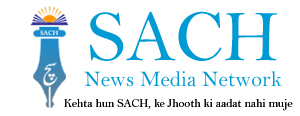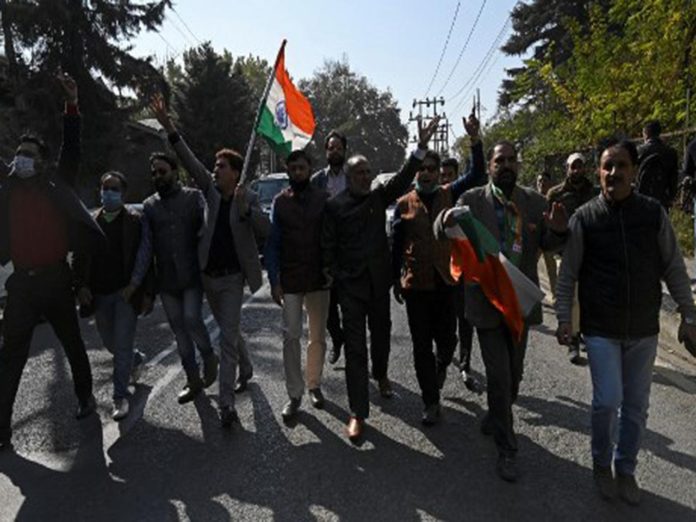Eight leaders and activists of the Bharatiya Janata Party (BJP) are among the 10 workers of different mainstream political parties who have been shot dead by ‘unidentified gunmen’, widely believed to be pro-Pakistan militants, in Kashmir in the last five months of the year 2020.Even as it does not take long for the family members of a victim and the residents of a neighbourhood to ascertain the identity of the assassins, media persons and politicians do conveniently call them ‘unidentified gunmen.’ For years, the behaviour of the muted civil society after every assassination has implicitly pointed fingers towards the assailants.If an assassination was believed or perceived to be the handiwork of the pro-government counterinsurgents, the police or the security forces, there would be protests and a call for shutdown from the militants or the separatists. There would also be a beeline of media persons, politicians and human rights activists to the victim’s home and an abundance of the condemnation statements.Contrarily, whenever the elimination was perceived to have been done by the militants, the Valley would be invariably a mute spectator. There would be no shutdown, no public condemnation and no special treatment to the news on the front pages of the local newspapers.The situation has changed since the BJP government at the Centre initiated a crackdown on the separatists after the Pulwama suicide attack that left 40 paramilitary personnel dead in February 2019. Particularly after abrogation of Article 370 and conversion of the state into the two Union Territories in August 2019, there has been little reaction to a killing.Even as some militant outfits owned responsibility for some political assassinations in Kashmir in the beginning in 1989-90, nobody has thereafter claimed any killing that had a potential to cause outrage among the people.As some high-profile political assassinations-like that of Mirwaiz Farooq in 1990 and Qazi Nisar Ahmad in 1994-evoked serious public reactions, the government and the separatist militants would invariably blame each other. Thirty years later, Kashmir does not seem to have changed much as everybody fears fatal reprisal of any act of angering the gunmen.“There have been several political killings which had clear signatures of a guerrilla outfit. Still the same organization issued condemnation statements and passed the buck to the other side as no scientific evidence like CCTV footage was left behind. Almost all the killers have used facemasks to hide their identity. In many cases, hit orders and condemnations have flown concomitantly from the same organization,” says a senior Kashmiri journalist now based in New Delhi.Separatist leader Abdul Gani Bhat once declared that all of the Valley’s political and intellectual leaders had been killed “not by India, but by our own men”.It happens very rarely that an assassin is captured alive or killed in the retaliatory firing from a protected person’s security guards. A rarest of the rare incidents happened lately at Nunnar in Ganderbal where the ‘unidentified gunmen’ attacked the BJP leader Ghulam Qadir on October 6.The targeted BJP leader survived but one of his personal security officers (PSOs) got killed. His retaliatory firing left one of the assailants dead. He was later identified as Shabir Ahmad Shah of Tral. His weapon of assault was also recovered. The J&K Police claimed that before joining militancy Shah had remained “right hand man” of the former Hizbul Mujahideen chief Riyaz Naikoo, who was killed in an encounter in May this year.The current spree of political killings began with a fatal attack on the Congress Sarpanch Ajay Pandita in Larkipora, Anantnag on June 8. On July 8, BJP leader Sheikh Waseem Bari was shot dead along with his brother and father, who were also his party activists, at Bandipora.On August 6, BJP Sarpanch Sheikh Sajad Ahmad was shot dead at Vessu, Qazigund. On August 9, BJP leader Abdul Hamid Najjar was gunned down at Ompora, Budgam. On September 23, chairman of Block Development Council Khag, Bhupinder Singh, was shot dead at his home. On October 29, three BJP activists were gunned down at YK Pora in Kulgam.Over 5,000 pro-Indian political activists have been killed in identical attacks in Kashmir since 1989. Some estimates put this number at 7,000.The first political killing was that of the National Conference (NC) activist Mohammad Yusuf Halwai in downtown Srinagar on August 21, 1989. He had reportedly refused to put off the lights of his home on the Indian Independence Day, on 15 August, when NC’s Farooq Abdullah was chief minister and the JKLF had called for a ‘black out.’Bharatiya Jana Sangh leader Tika Lal Taploo was shot dead on September 13, 1989 in Habbakadal, Srinagar.Firebrand politician and former independent MLA Mir Mustafa was kidnapped and his bullet-riddled body was thrown at Batmaloo-close to the Police Headquarters and Srinagar Police Control Room-on March 25.CPI leader Abdul Sattar Ranjoor was also killed in March 1990, followed by ex-minister Sheikh Jabbar in April 1990 and ex-MLA Sheikh Mansoor in May 1990. Ghulam Qadir Wani and his son Nazir Ahmad Wani, both NC’s ex-MLAs, were also killed subsequently in Pulwama.Veteran politician Maulana Mohammad Sayeed Masoodi was shot dead at the age of 87 years by terrorists of Hizbullah at his home in Ganderbal in December 1990.Ex-MLA Peer Mohammad Shafi was among scores of the prominent political activists shot dead in 1991. Ex-MLA Mohammad Subhan Bhat and his brother Showkat were also killed in Tral in 1991. Their third brother Fayaz Ahmad was shot dead in 2002.Ex-Minister Wali Mohammad Itoo was shot dead near a mosque in Jammu’s Khatikan Talab in March 1994. His successor-daughter Sakeena Itoo survived over 20 attacks on her life. Ex-MLA Ghulam Nabi Dar got killed in one of such attacks in Kulgam. Ex-MLA of Muslim Unite Front Abdul Razaq Mir was also shot dead in Kulgam.After the NC regained power in 1996, MLA of Langate Abdul Ahad Wani (Kar) was the first legislator who was ambushed and shot dead during his morning walk near Qalamabad, Handwara in May 1999.MLA Dooru, Ghulam Hassan Bhat, was the first sitting Minister who was killed in an IED attack in Dooru area in May 2000. Senior Congress leader Aga Syed Mehdi was killed along with his PSOs when militants blew up his vehicle on Srinagar-Gulmarg Road in November 2001.State minister of law Mushtaq Ahmad Lone was gunned down while addressing an election rally in Lolab Kupwara in September 2002. Ex-Minister Safdar Ali Beg was killed in Anantnag in October 2004.Counterinsurgents-turned-politicians, ex-MLC Javed Shah and ex-MLA Kukka Parray, were killed one after another respectively in August and September 2003.Among the separatists, Peoples Conference chairman Abdul Gani Lone was the most prominent politician who was shot in broad daylight at the remembrance ceremony of Mirwaiz Farooq at Eidgah in Srinagar in May 2002.Former Peoples League leader Sheikh Abdul Aziz got killed in an incident of the Police firing on Srinagar-Uri Road in August 2008. A number of JEI activists were killed during the Ikhwan era of 1995-98. In October 2005, Ghulam Nabi Lone of Peoples Democratic Party (PDP) was the first sitting minister who was killed in a suicide attack inside his home, in Tulsibagh, Srinagar.Scores of Urban Local Body members, Panches and Sarpanches and other leaders of different political parties have also been assassinated in Jammu and Kashmir.
ABOUT US
Sach News® - raising the voice of people of Jammu Kashmir since 1940. We are Publishing House of Daily Sach (Urdu Daily). Sach News, is one of the Oldest News Group of India having its office in Jammu Kashmir, Delhi. Reach us for Latest news on politics, sports, crime, education, real estate, business entertainment and much more. We provide you with the latest breaking news and videos straight from the ground zero.
Contact us: [email protected]
© Sach News Network 2011-2024 | Maintained by Sach Info Tech


